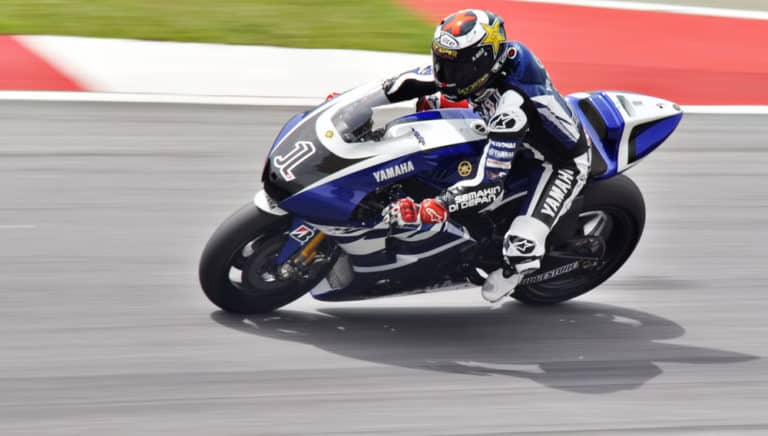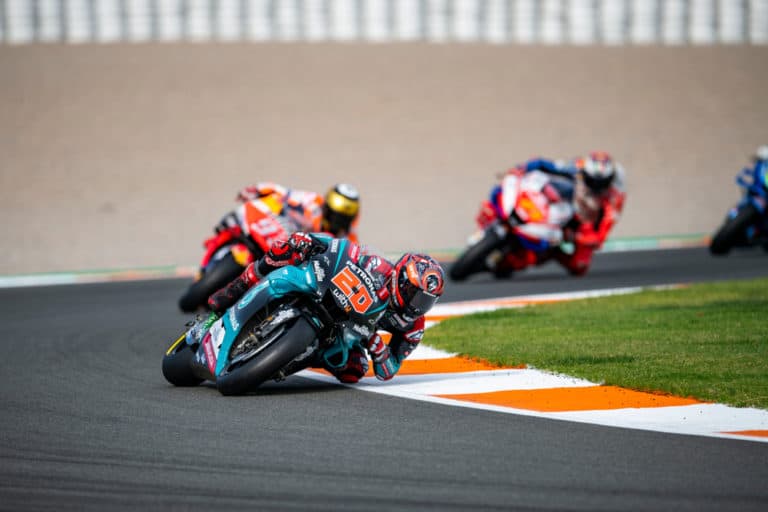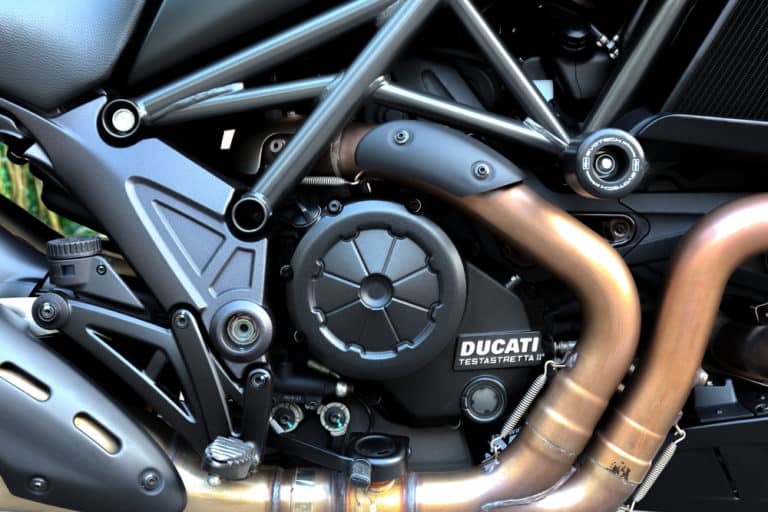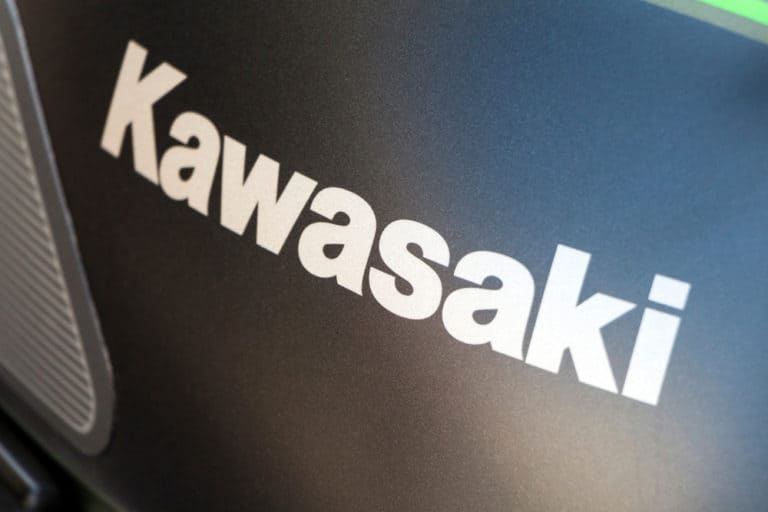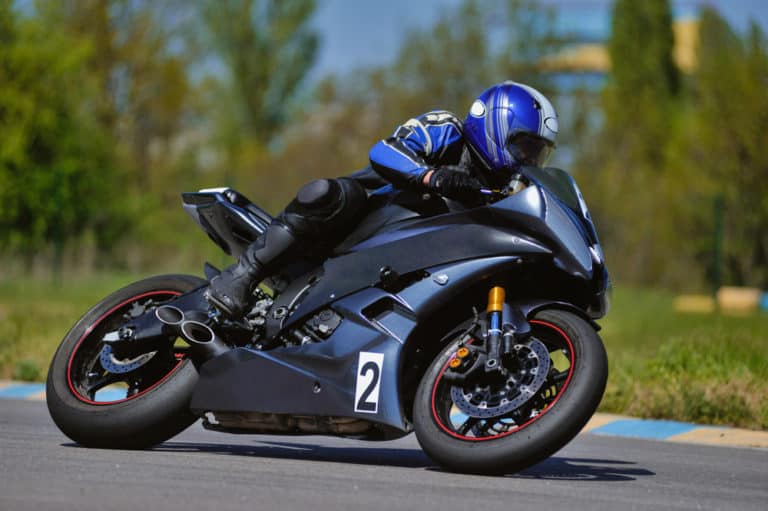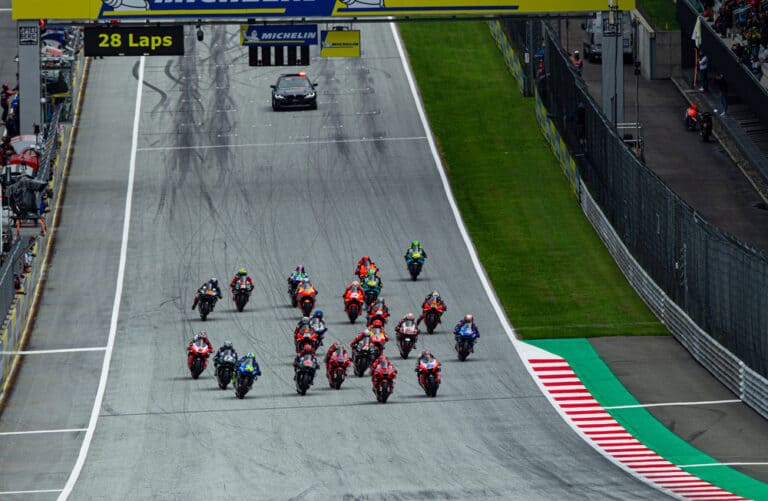Tires in MotoGP play a crucial role as they are literally what allows the bike to move. As this is MotoGP, the highest level of motorsports, every 0.1 bars, second, etc., counts. Therefore, it isn’t surprising that the tire pressure has to be within an exact PSI range. So, what is the minimum tire pressure in MotoGP?
In MotoGP, the front tire must have a minimum tire pressure of 1.9 bars, while the rear tire must have a minimum tire pressure of 1.7 bars. If a MotoGP rider does not adhere to the set tire pressure bars, they are considered breaking the rules. Furthermore, the temperature can affect tire pressure.
As with most things, changes often need to be made as the sport advances. Tire pressure in MotoGP is under heavy reconstruction as of this year. Here is why tire pressure is important in MotoGP, why there are new rules being introduced, and how temperature affects tire pressure and, subsequently, a bike’s racing efficiency and safety.
Is There A Minimum Tire Pressure In MotoGP?
MotoGP has many rules, like how much a MotoGP bike must weigh. Therefore, it is not surprising that many wonder whether there are any set rules regarding the front and back tire pressure. The required minimum tire pressure for the front tire in MotoGP is 1.9 bars, whereas the minimum tire pressure required for the rear tire in MotoGP is 1.7 bars.
Although pressure and temperature fluctuate throughout the race, it can be generalized that the tires settle into a routine around the ninth or tenth lap. However, this isn’t set in stone. This is because the circuit, the weather, and the slipstream all have an impact.
The tire could break if one goes too low, and the traction will usually decrease if one goes too high. The drop is considerable for the front at 2.2 bar. Because of this, MotoGP calculates how many laps can be completed to surpass this criterion for the upcoming season.
What Change In MotoGP Has To Do With Tire Pressure?
Following the MotoGP tire pressure rules is crucial as it helps to provide the best performance and to assure the rider’s safety. Therefore, tires must be inflated to the manufacturer’s specifications. However, the tire pressures have not been consistent throughout the teams.
Suppose you are wondering how that is the case. As mentioned, the MotoGP regulations call for minimum tire pressure for both the front and rear tires. However, the problem is that not every team is measuring that tire pressure in the same way.
Therefore, it must be taken into account how tire pressure is measured as manufacturers utilize various sensors, each of which has a different level of precision. It has been stressed that cheating isn’t what is being discussed but that the focus is more on the fact that not everyone identically experiences pressure measurement.
Currently, the method of data acquisition is likewise insecure in the sense that anyone has the opportunity to improve their signal. It is possible to alter the signals to give the impression that one is within the limits when, in fact, they are not.
This is where a new rule that has been proposed comes in. By the time 2023 rolls around, every rider will be equipped with the same sensor. This is to ensure the readings will be aligned and unchangeable. In addition to this new rule, there will also be a control system in place.
The rules for this year mandate that sensors be installed on each wheel. These make sure the tire pressure is kept within allowed levels.
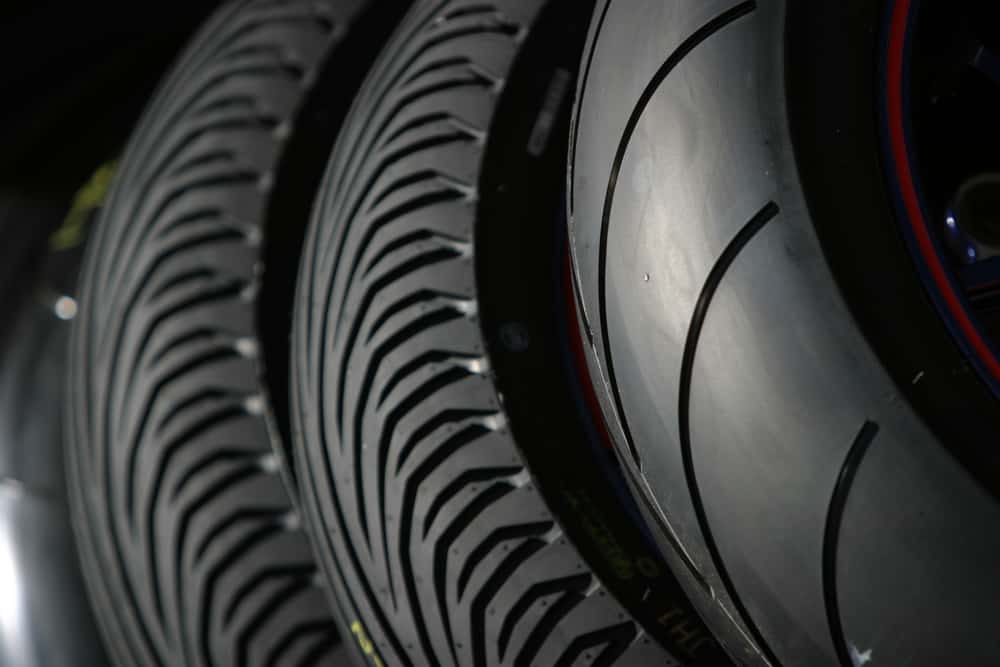
How Does Temperature Affect MotoGP Tires?
The issue of safety is equally crucial. It’s important to remember that while returning inside the threshold with the rear tire is quite simple, doing so with the front tire is very challenging. This is due to the fact that pressure changes depending on the temperature and that following someone or not affects how the race goes.
If one rider is behind another, there are greater concerns due to the increased pressure and weakened grip. Riders, therefore, have to stay inside a very small range. MotoGP riders find that it is quite important to try to control the space because the tire cannot tolerate spending a lot of time behind another rider in a race.
Although Michelin’s MotoGP tires are extremely high-performance, they are also quite susceptible to temperature and pressure variations. This is much like any other high-performance machinery or equipment.
Because everything in MotoGP is now typically extremely equal, even little differences, like different tire pressures, can have a big impact. For example, the difference in front tire pressure of 2.08 to 1.90 bars can cause vastly different riding experiences.
At 2.08, the bike will most likely start chattering obnoxiously. This is an indication that the rider is losing the front tire fast. Therefore, the bike won’t turn, making passing other riders impossible. The bike becomes a total failure.
In comparison, everything will go smoothly with the other. In most cases, riders will find themselves half a second faster when there are no other riders in front of them. The problem starts when riders get too close to the bike in front of them. This is because the tire pressure increases, meaning you have to brake earlier or risk crashing.
What Else Causes Tire Pressure To Fluctuate?
Rubber is far less stable than metal. You can easily stray from the PSI settings by riding a slightly slower or faster lap, being in traffic, closely following another bike, braking more forcefully, or having an aggressive setup. All of those things influence PSI variations and cause small fluctuations. Marginally, yes, but not by much.
Conclusion
As can be seen, tire pressure in MotoGP is crucial in many ways but, most importantly, in keeping riders safe. Riders have a narrow limit to work with as temperatures are known to cause tire pressure to fluctuate substantially. The new sensor rule that plans to be introduced is the first step in ensuring team equality and fairness.

